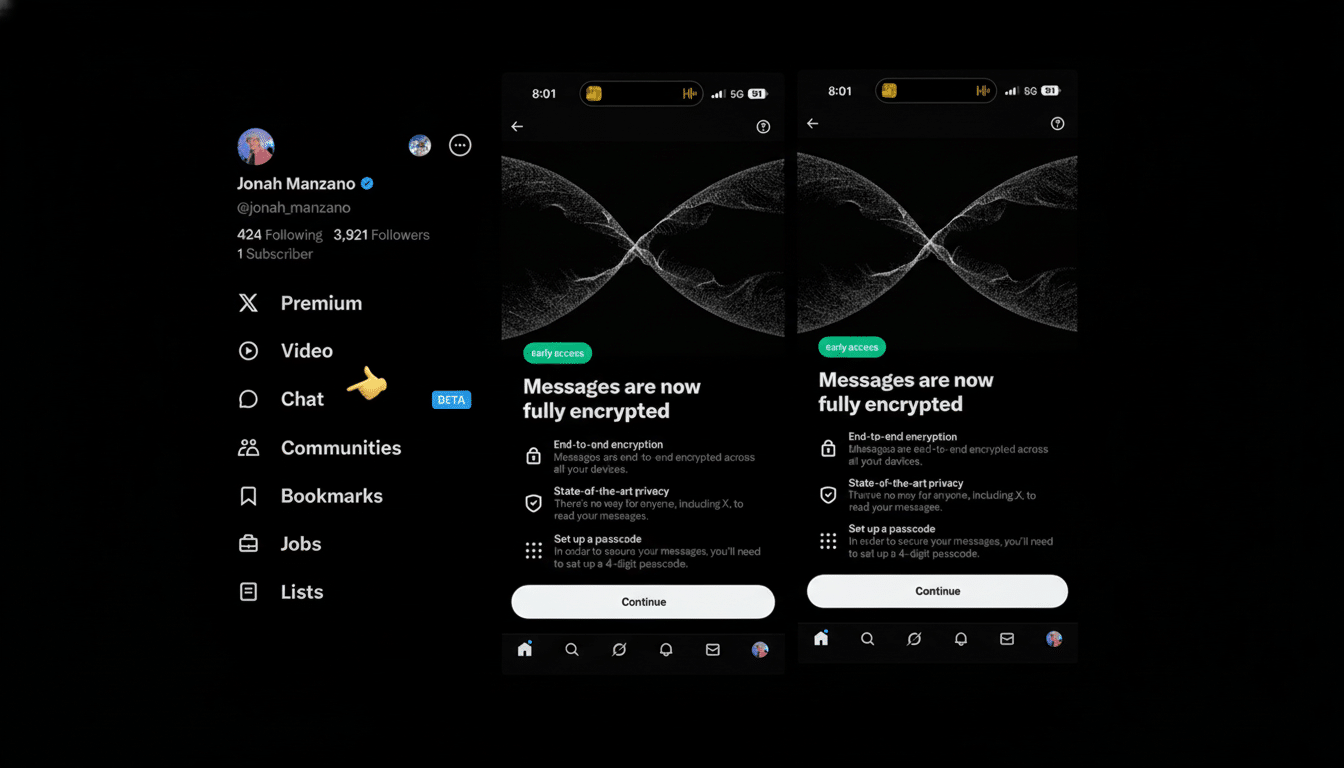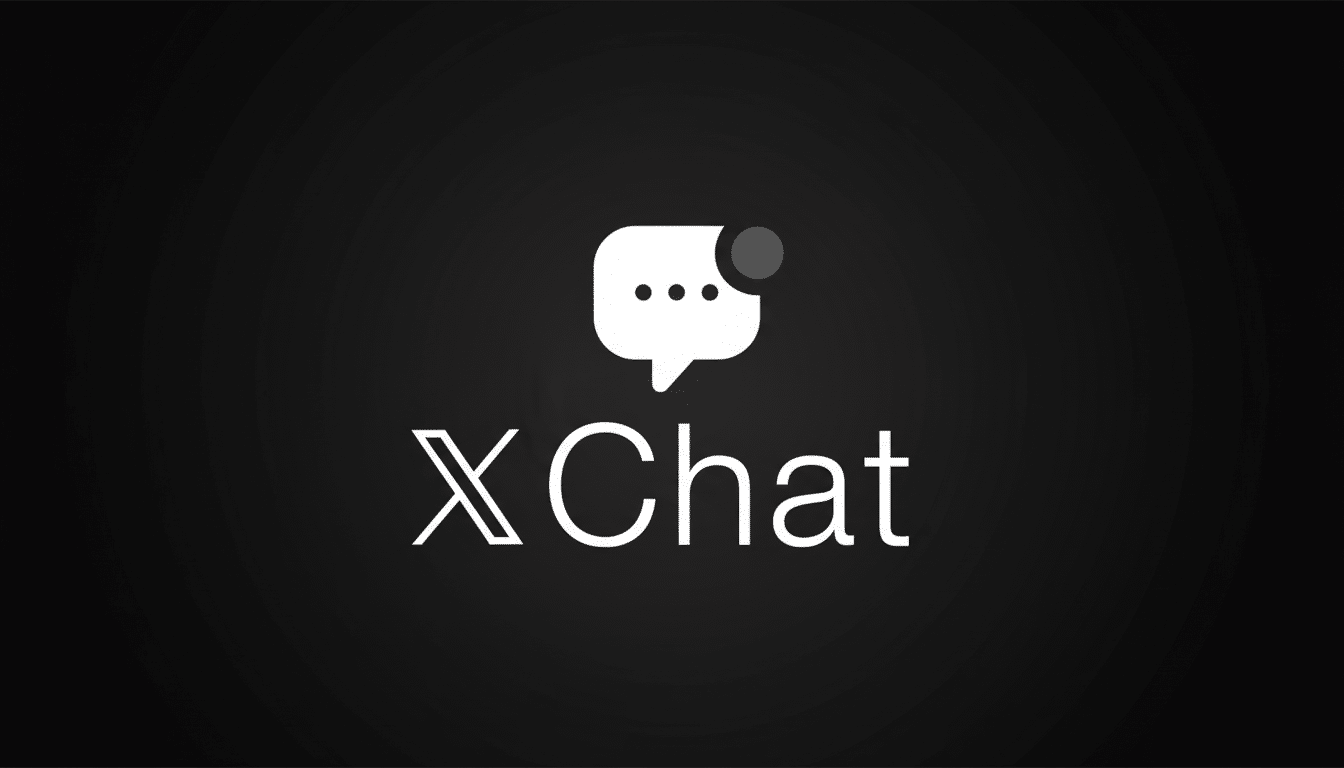X begins replacing traditional DMs with a new Chat, featuring end-to-end encryption, deletable messages, and disappearing timers. The change transforms the enduring DM inbox into a privacy-forward space, taking strong notes from Signal’s analogous design while trying to maintain the social graph and group threads that users already depend on.
One-to-one and group conversations remain, the company said, but now they exist within a redesigned interface featuring security barriers activated by default. For a platform that’s long prioritized public discussion, this is a significant shift toward private, curated conversations more in tune with how people already communicate via messaging today.

What’s Different in X Chat: New Privacy and Controls
The highlight features are the ability to edit messages after sending, delete them for all participants, and auto-erase a message on a timer. (There’s a new onscreen timer, allowing you to have more control over how long your words will last—one of Signal’s signature features and increasingly standard in other secure messengers.)
Beneath the surface, end-to-end encryption works like this: Only people participating in conversations should have the keys to read what’s being said. X is framing this as a privacy guarantee that not even the service can subvert. That means, in practice, servers are transporting ciphertext, not plain text—and message history should be unrecoverable if intercepted.
The interface has also been redone. Chats, media, and settings are now closer together than before, making search and message actions more prominent. Early users are reporting something of a learning curve: finding older threads and controlling group names take more taps in the new DM flow.
How It Compares to Signal and Competitors
Signal is still the gold standard thanks to its open-source Signal Protocol, independent audits, and features like the double ratchet for forward secrecy. WhatsApp, which also employs the Signal Protocol, has extended end-to-end encryption to billions of users and claims that more than a hundred billion messages are sent daily using its service. Apple’s iMessage is also encrypted and has recently started to shift toward post-quantum protections, it says in its security documentation.
X’s logic hopes to have the same effects—confidentiality, integrity, and control—but will only be as successful as it is transparent. Security groups like the Electronic Frontier Foundation and cryptographers are generally looking for public specifications, reproducible builds, and independent evaluations. Those ingredients help the community verify that there is a match between claims and the real world, and that implementation errors don’t dilute mathematical results.
Another differentiator is metadata. Signal-like designs tend to keep only a minimal amount of data on the retention front, as opposed to social platforms that have more account- and network-related information. Message content is protected through end-to-end encryption; it does not obscure who talks to whom and when, or from which devices. How X manages to mitigate that will dictate how “Signal-like” the experience actually becomes.

Encryption Strengths and Weaknesses Users Should Know
End-to-end encryption offers powerful protection against a server breach, rogue employees, and network snoopers. If deployed, forward secrecy means that breaking one party’s key will not unlock messages from the past. For better privacy (especially for those active in groups and channel chats), portions of the data used will be trimmed.
But encrypted chat is no panacea. Device-level compromise, screenshots, and cloud backups can all still give you away. Any messages will become visible to trust and safety teams when they are reported by users. Because encrypted systems are unwieldy, account recovery, multi-device sync, and backup need to be designed with extra care so that users do not accidentally lose their data.
Enterprises will look for admin controls, export capabilities, and compliance hooks. In Britain and the European Union, regulators have pushed back, insisting that platforms will need to balance safety and encryption; privacy advocates respond that weakening cryptography will make everyone less secure. How X chooses to play that policy tug-of-war will determine the extent to which organizations embrace the new Chat.
Early User Feedback and Usability in the New X Chat
According to power users who have had exposure to the rollout, it loads slower on mobile, and there is added friction in finding historical threads in the web interface. Group management—such as renaming rooms or changing membership—feels less discoverable than it used to. Such pain points are to be expected in early-stage messaging redesigns, but they matter: private chat is habitual, and any extra friction risks further nudging communities elsewhere, toward alternatives such as Discord or WhatsApp.
The upside is obvious: controls users are accustomed to in a modern messenger now built where their network already exists. If performance flexes tighter and navigation slickens up, X could hold more of the conversation on-platform instead of it bleeding out to third-party apps.
What to Watch Next as X Rolls Out Encrypted Chat
Security transparency is what comes next. Public crypto specs, bug bounty focus on Chat, and independent audits would help. Real, not hyped, trust will be driven by clear metadata policies and device management that displays active sessions without being a hot mess, with easy key verification and safe onboarding of new phones.
If X takes off, encrypted Chat will further cement its push to become an “everything app,” providing users a private lane alongside the public timeline. If usability or trust should fail you, the market’s already saturated with mature, audited alternatives. For now, the decision finally brings X to a privacy baseline that many users have long come to expect—and raises the bar high for transparency details to support it.

